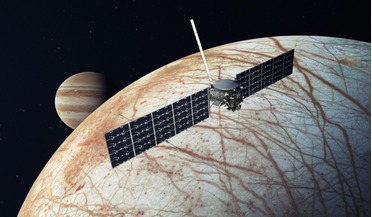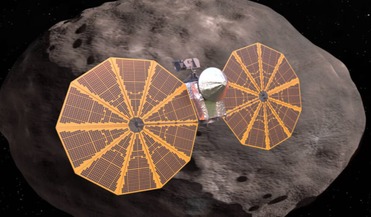 26 May 2021
Underwater volcanoes could be active on Europa
26 May 2021
Underwater volcanoes could be active on Europa
... massive gravitational pull exerted by Jupiter. The pushing and pulling motions the moon experiences as it orbits the gas giant causes its interior to flex. This generates heat and the more the moon’s interior flexes, the...
 18 October 2021
NASA's Lucy mission launches, encounters problem with solar panel
18 October 2021
NASA's Lucy mission launches, encounters problem with solar panel
...” of planetary formation; Trojans. Clustered in two loose groups in an orbit around Jupiter – one group leads ahead of the gas giant in its path, the other trails behind – Trojans are thought to be remnants of the primordial material that formed...
 04 February 2018
Worlds Fantastic, Worlds Familiar: A Guided Tour of the Solar System
04 February 2018
Worlds Fantastic, Worlds Familiar: A Guided Tour of the Solar System
... appears to cover the planets of the solar system one by one but a second glance shows that the gas giants are missing. Instead, the author substitutes some of the better known moons of the solar system, such...
 29 March 2018
NASA Voyager 1&2 Owners’ Workshop Manual
29 March 2018
NASA Voyager 1&2 Owners’ Workshop Manual
... design of the all-important gravity propulsion trajectories that allowed the spacecraft to boost themselves past the gas giants towards the edge of the solar system is particularly good. It’s one of those stories about stubbornness, competence and...
 09 October 2019
This year's Physics Nobel Prize winners
09 October 2019
This year's Physics Nobel Prize winners
... instruments, they were able to see planet 51 Pegasi b, a gaseous ball comparable with the solar system’s biggest gas giant, Jupiter. This discovery started a revolution in astronomy and over 4,000 exoplanets have since been found in the...